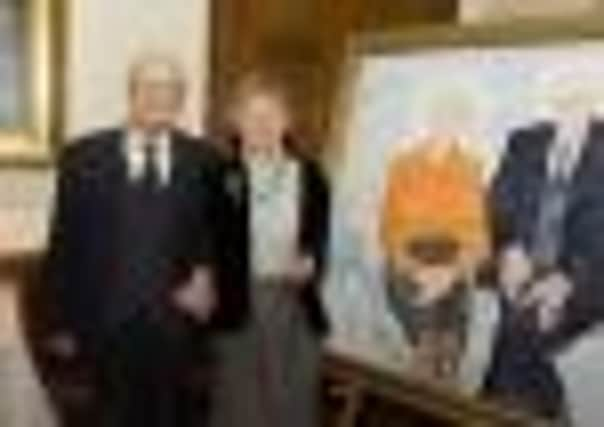Obituary: Professor Sir Ken Murray FRS, FRSE, BSc, PhD, biologist


Ken Murray was one of the most eminent scientists in the United Kingdom and an international leader of scientific innovation. He developed the first vaccine against viral hepatitis B, which has saved countless lives worldwide.
Prof Murray was one of the earliest workers in genetic engineering, which has opened a new avenue of scientific research and has led to new treatments for diseases and genetic disorders. He was co-founder of the first European based Biotechnology company, Biogen.
Advertisement
Hide AdAdvertisement
Hide AdMost of his commercial income was used to found the Darwin Trust in 1983. The trust has supported the education of many young scientists, and helped to fund cutting-edge research and improved facilities at the University of Edinburgh. His generosity also supported activities to inspire the next generation of potential scientists.
Ken was born in Yorkshire and brought up in the Midlands. He left school at the age of 16 to become a laboratory technician at Boots in Nottingham.
After part-time study he obtained a first-class honours degree in chemistry and a PhD in microbiology from the University of Birmingham.
It was in Birmingham that he met his wife, Noreen, who was to become a close scientific collaborator.
They were married in 1958 and shared many interests, such as hill walking and camping. They continued to support each other throughout their lives.
Ken continued his research at Stanford University and returned to the UK in 1964 where he worked in the Medical Research Council Laboratory of Molecular Biology.
He joined the University of Edinburgh in 1967 at what was then the only department of molecular biology in the country. He went on to become Biogen Professor of Molecular Biology in 1984. He and his colleagues made the university a leader in the molecular biology revolution.
Ken went on to become head of Molecular Biology from 1976 to 1984. Following his retirement in 1998, he continued to come to the laboratory every day, leading further scientific endeavours. Increasingly, he spent more time on his philanthropic support of others through the Darwin Trust. Ken received much recognition for his outstanding work. He was elected to the Royal Society in 1979, received the Willem Meindart de Hoop Prize in 1983, and in 1992 was given a Saltire Society Scientific Award. He was awarded a knighthood in 1993 and a Royal Medal by the Royal Society of Edinburgh in 2000. In 2010, Ken and Noreen jointly received a lifetime achievement award from Nexus Life Sciences.
Advertisement
Hide AdAdvertisement
Hide AdRecently the Noreen and Kenneth Murray Library was built at the King’s Buildings Science Campus at the University of Edinburgh, recognising the couple’s distinguished careers and their commitment to the advancement of science and engineering.
Despite the wealth from Ken’s vaccine and his various successes, he remained a very modest and approachable person. He was an inspirational teacher and collaborator who was always very supportive of colleagues and friends and quick to praise success.
Ken’s scientific interests lay in methods for sequencing, or deciphering, strands of DNA code. He developed methods based on new ideas, to isolate specific genes, and so began genetic engineering.
Along with Noreen and others, he developed recombinant DNA technology, or gene cloning. This represented a revolution for scientists in terms of understanding how cells work, how genetics work and how the development of organisms is controlled and how it can go wrong.
Prof Murray immediately put these ideas to a practical task – how to create a vaccine for a devastating liver disease, hepatitis B. This condition lacked reliable treatment and led to deaths among the 300 million people around the world infected with the virus.
Ken found a way to identify the hepatitis B virus and then produced a man-made vaccine.
This was done under very difficult conditions, as people were scared of new genetic engineering technology, and so he had to work in secure facilities.
By 1978, Ken and colleagues had created the vaccine and later proved that it was effective in treating hepatitis.
Advertisement
Hide AdAdvertisement
Hide AdHe was involved in the establishment of Biogen, which commercially developed the vaccine for use. The vaccine is used around the world. After this success, Ken continued his molecular biology research activity at Edinburgh for many years.
Ken had suffered from ill health for a number of years, yet remained very active intellectually and had a wide circle of friends around the world.
Noreen died in 2011. Although Ken and Noreen had no children, they leave behind a large community of colleagues and friends whose lives they have touched.
This includes the students and colleagues with whom Ken shared his ideas willingly, colleagues who were able to use his techniques and materials for their own scientific research, those whose education he financed, and the many who did not know him but whose lives were improved because of his work.
He will be sadly missed.
PROFESSOR MARY BOWNES